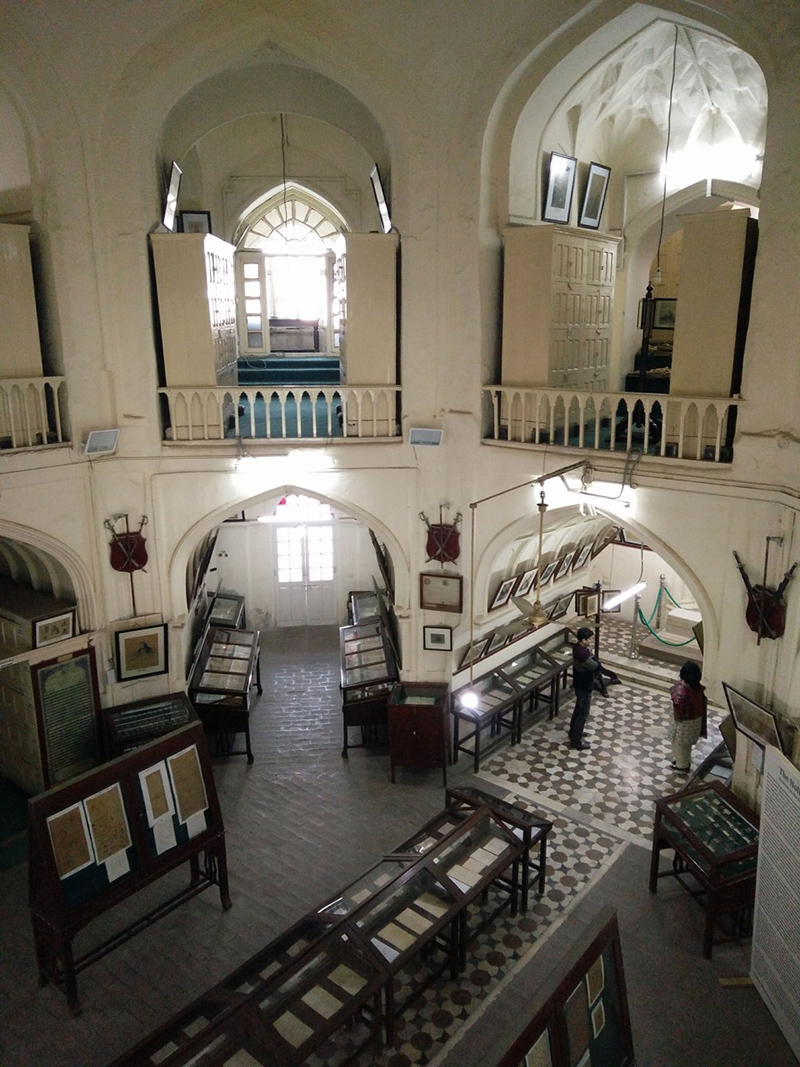Written by: Moiz Abdul Majid
Posted on: February 28, 2020 |  | 中文
| 中文
Anarkali's Tomb in the Civil Secretariat
A timeless legend that has lived on in Lahori imaginations is that of Anarkali and Prince Salim (before he was Emperor Jehangir). Immortalized by Imtiaz Ali Taj’s iconic 1922 play, this is a story of love and loss. The story goes that the beautiful courtesan Anarkali (whose name means, “Bud of Pomegranates”) locked eyes with Prince Salim during a dance performance in the Sheesh Mahal. The reflections of their romantic gestures are caught in the mirrors by Emperor Akbar, who wished to keep Anarkali for himself. Enraged by jealousy, Akbar had her buried alive in a tomb for no one to have her, and that tomb still stands in Old Lahore today. But to date, no one has really been able to prove if the ill-fated paramour ever factually existed.
The very first record of an Anarkali is found in the travelogues of William Finch, a British tourist traveling in India from 1608 to 1611. He explained that the beautiful Anarkali was a part of the Emperor Akbar’s harem and perhaps even one of his wives. However, other records, including Jehangir’s personal memoirs, do not mention Anarkali at all. Instead, historians found evidence of a woman named Sharf-un-Nissa, who might’ve been known as Anarkali, due to her immense beauty.
The story of her life and demise is also one of great confusion among historians. Most believe that Anarkali died due to natural causes, while Akbar was away on a campaign to Deccan. But the popularized myth of her death is very different, and many variations of it can be found in oral histories of Lahore. Firstly, there is the above-mentioned story of Anarkali sealed between the two walls of her tomb. According to popular retellings of Finch’s version, she was buried alive in the Lahore Fort in 1599, and the heartbroken prince built her the empty tomb after his father’s death. But the lack of historical evidence supporting the entombment story, seems to suggest that perhaps Lahore’s greatest love story is not rooted in historical fact.
That being said, who could be buried at Anarkali’s Tomb? The building currently located in the Punjab Secretariat, has always been attributed to be the tomb of the ill-fated concubine. But Abdullah Chughtai, the renowned 18th century historian, begged to differ. According to him, the tomb was the final resting place of Jehangir’s wife Sahib-i-Jamal, and was only named Anarkali’s Tomb because it was surrounded by a lush pomegranate garden at the time.
Sahib-i-Jamal was the daughter of Khawaja Hassan of Herat, and the cousin of two-time Kabul governor, Zain Kahan Koka. After she married Jehangir, she was given the title of Sahib-i-Jamal (the Paragon of Beauty), by Akbar himself. She was married to the future emperor in 1589, and died in 1599, which could tie into Finch’s account. Not much is known about her life, except for the fact that she was a highly educated and cultured royal.
Her final resting place has seen a lot of different phases of development. While initially constructed by Jehangir, the tomb was used as a residence for General Jean Bapstiste Ventura’s wife in the 1800s, under the rule of Kharak Singh, son of Ranjit Singh. After the British annexed Punjab in 1849, the tomb was painted white, and converted into a Protestant church in 1851. During that era, the cenotaph in the center of the tomb, was shifted to the church altar. In 1891, the church moved, and since then, the building became the home of the Punjab Records Department.

Inside the Punjab Records Department in Anarkali's Tomb (the cenotaph can be seen in the bottom right corner)
The myth and mystery of Anarkali has puzzled historians for years, and is a great example of how Mughal-era primary sources can provide diverging information. But one can believe that, even if the facts may differ, the sentiment of love has remained throughout time. The octagonal single storied building still stands out today in the heart of Lahore’s bureaucratic center, the Punjab Secretariat. Sahib-i-Jamal’s white marble cenotaph has the 99 names of Allah inscribed over it, along with a couplet written by Jehangir that reads, “Ah! could I behold the face of my beloved once more, I would give thanks unto my God until the day of resurrection.”
You may also like: